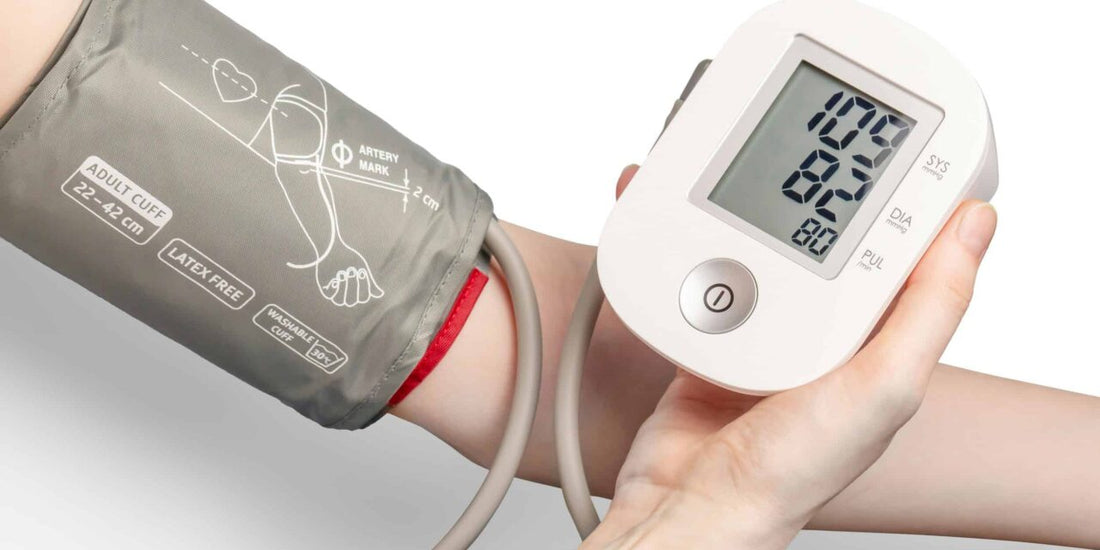
Find a Blood Pressure monitor that suits you

Self-monitoring of blood pressure at home is an important adjunct to clinic measurement because it provides supplementary information to practicing doctors.
Measuring your blood pressure at home means measurements can be done in your usual environment at your convenience. It also allows for multiple readings to be averaged over time. Both of which give a more reproducible blood pressure values that are reflective of your “everyday” blood pressure. This helps to mitigate abnormally high readings that sometimes happen due to anxiety when your blood pressure is taken in the clinic environment by a doctor or a nurse – also known as white coat hypertension.
With your home blood pressure information readings, doctors can provide more accurate diagnosis and treatment of hypertension conditions to their patients.
Studies have also shown that patients who were trained to measure their own blood pressure at home may improve control of their blood pressure by improving drug compliance – since they become more involved and informed in their self-care.
There is now a plethora of devices that are developed with specific purposes and needs of users. Making sure the blood pressure monitor you choose is right for you can go a long way in ensuring your condition is well-managed and fuss-free.
Here are some ways how you can start choosing one that fits your preference:
1. Decide On The Type Of Monitor
Blood pressure monitors vary in their inflation models – manual, semi-automatic or automatic.
Manual blood pressure monitors must be pumped up using a rubber bulb at the end of the cuff and have to be used together with a stethoscope to measure blood pressure. Correct use of manual monitors usually require medical training.
An automatic monitor also requires the cuff to be wrapped around your upper arm or wrist but automatically inflates by pressing a button, senses and records the blood pressure and displays the reading on a digital display on the monitor’s screen. This is most accessible and common type for patients at home. You may consent with your doctor or pharmacist as they will be able to help in selecting the most suitable type for you.
2. Get The Right Size Cuff
A wrong sized arm cuff or ‘miscuffing’ can affect your readings. It is the biggest cause of inaccuracies in blood pressure measurement.
Measure around your bare arm halfway between your shoulder and elbow using a close measuring tape to find your size. Most upper-arm models have two sizes or a wide-range cuff that fits most people.
Make sure your upper arm circumference falls within the range of the blood pressure monitor cuff.
Most devices come with standard cuff sizes that fit a wide range of arms, from small adults to large adults. However, children and adults with smaller or larger-than-average-sized arms may require special-sized cuffs. These optional cuffs can be purchased from medical supply companies, directly from blood pressure cuff manufacturers, or in some pharmacies.
3. Select Monitors For Ease Of Use
Buy a blood pressure monitor that is easy for home monitoring. Be sure the display on the monitor is easy to read and understand, and that the buttons are large and intuitive. The directions for applying the cuff and operating the monitor correctly should be clear.
You should also consider its portability especially if you are a frequent traveller or are advised to measure your blood pressure several times a day. Look for the one that is compact and easy to bring around with.
4. Additional Extra Features
To make your blood pressure routine as simple as possible, manufacturers have come out with various extra features that may benefit you. Some of the additional features that you may consider include:
+ Heart-related measurements:
Measures pulse rate, detects an irregular heartbeat and tracks changes per second in your systolic or diastolic rates. Users tracking blood pressure to monitor potential heart conditions could benefit from these features, but they might be unnecessary for others.
+ Connectivity:
Some BP monitors can connect to your home computer so that the readings can be downloaded. More commonly now, there are BP monitors can connect via Bluetooth to your smartphone, which is very convenient when it works well. Some monitors even come with an app that helps you track, record and/or share your blood pressure readings with your doctor.
+ Memory storage:
Determine the needed memory storage based on how many times per day you need to take your blood pressure reading. You should also consider a multiple-user monitor if you and another family member will both be measuring your blood pressure regularly.
+ Adjustable inflation level:The automatic inflation setting might be too high, causing discomfort during the inflation. Some manufacturers let you adjust the inflation level or have technology that automatically adjusts the pressure to each patient’s needs.
+ Mobile Application Monitoring:
Some advanced BP monitors can connected and accessible on your phone. You’ll need to install their app and create an account for their service. If you need daily check-ins for your family members, this might be a good option.
7. Check Warranty Details
Most reputable blood pressure monitors and cuffs come with a warranty that will guarantee the proper function of the monitor from 1 – 5 years. Read the warranty options to know whether it covers the whole monitor or only the digital display or the actual monitor, but not the cuff. Do note that some brands will charge an additional fee for warranty activation while others offer the warranty free with the purchase of the monitor
